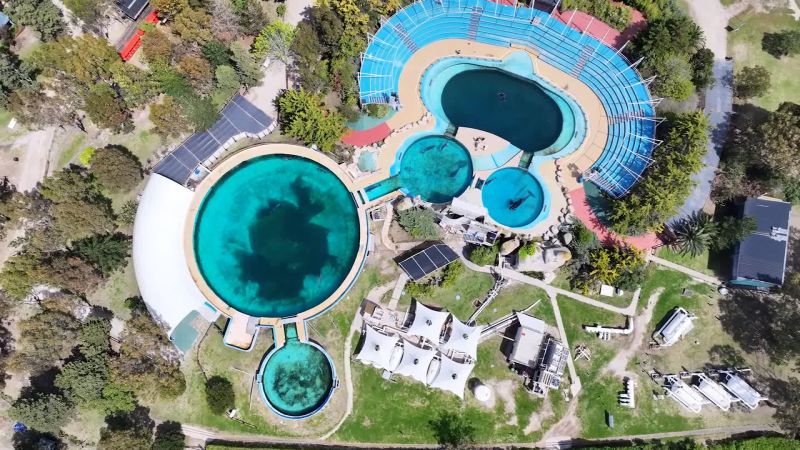In the coastal province of Buenos Aires, Argentina, a sight that once delighted visitors now invokes heartbreak and calls for action. Here resides Kshamenk, the last captive orca in Latin America. The mammoth black and white Orca is the object of a significant international campaign, ‘Free Kshamenk’.
The origins of this campaign can be traced back to Kshamenk’s story. Initially part of a trio, Kshamenk was caught from the wild in 1992, along with two other young orcas. They were destined for Mundo Marino, Argentina’s largest aquarium. Kshamenk’s captivity companions have long since died, leaving him in solitary confinement for years.
In the confines of Mundo Marino, Kshamenk’s living conditions are nothing short of dire. The enclosures are inadequate for accommodating a fully grown orca like Kshamenk, who grew far beyond their expectations. His artificial environment not only lacks space but also social interaction and stimuli, which are vital for a socially and cognitively advanced species like orcas.
It’s these appalling circumstances that incited the launch of the ‘Free Kshamenk’ campaign. The initiative emerged from a collective effort of eco-activists, animal rights organizations, and concerned citizens both in Argentina and across the globe. Their aim is unequivocal – to ensure Kshamenk’s release into a sea pen or an open water sanctuary where he can live out his years in an environment as close to his natural habitat as possible.
The campaign has made substantial progress in raising awareness. Utilizing various channels such as social media, peaceful protests, and education drives, they have shared Kshamenk’s plight with the world. They have engaged in relentless advocacy to sway public opinion in favor of Kshamenk’s release, convincing prominent environmental activists and celebrities to join the cause and voice their support.
In recent years, the campaign has gained validation from significant entities. More empathetic attitudes towards marine life are emerging, supported by laws prohibiting cetacean captivity. Notable examples are Canada’s ‘Free Willy’ bill, which bans dolphin and whale captivity, and Catalonia’s foresighted ban on breeding orcas in captivity.
Despite the clear signs of progress, the struggle to win Kshamenk’s release is far from over. Legal and logistical barriers persist, given the complex bilateral collaboration required between the aquarium and the Argentine government, environmental agencies, and non-profit organizations. Aquatic veterinarians and sea mammal experts also need to be involved to ensure Kshamenk’s safe relocation to his new home.
Moreover, while public awareness has risen thanks to the efforts of the ‘Free Kshamenk’ campaign, resistance from certain sections of society rooted in a traditional paradigm of animal-human relationships continues to obstruct the path towards Kshamenk’s liberation. In this paradigm, orcas like Kshamenk are prized tourist attractions that help generate jobs and revenue, not sentient beings deserving of essential rights and freedoms.
Through its efforts, the ‘Free Kshamenk’ campaign signifies a paradigm shift towards greater empathy for captive marine creatures. It underscores the need for societal change in our attitudes towards marine life and wildlife in general, emphasizing the importance of preserving species in their natural habitats.
Ultimately, the ‘Free Kshamenk’ campaign constitutes more than just the fight for a single orca’s liberation. It’s a symbol for the movement against cetacean captivity, a pressing reminder of the plight of thousands of marine creatures languishing in confinement worldwide, and an inspiring testament to global solidarity towards a more compassionate future.




